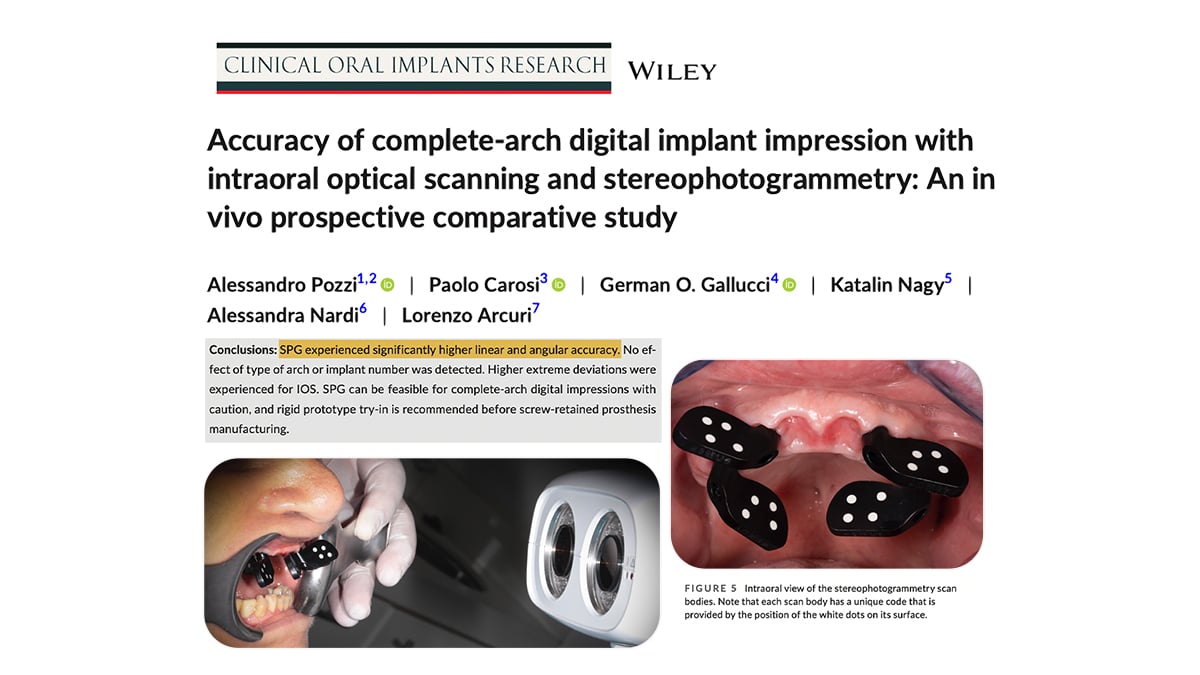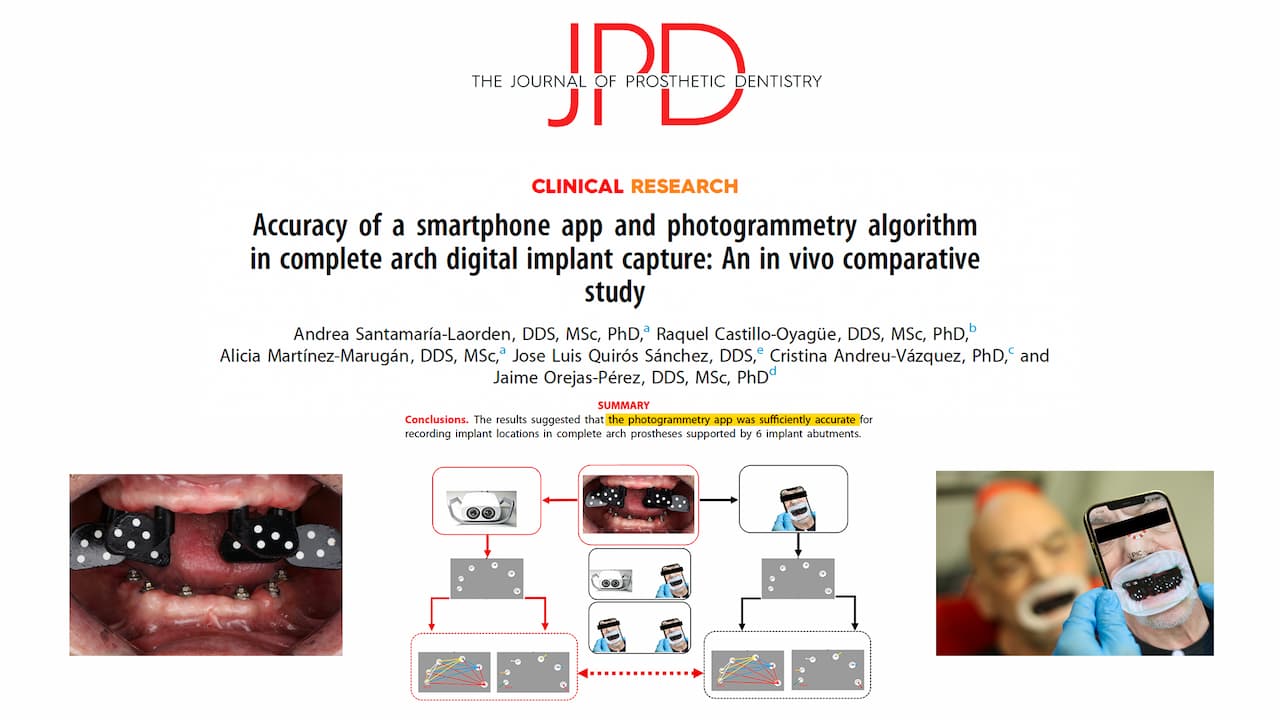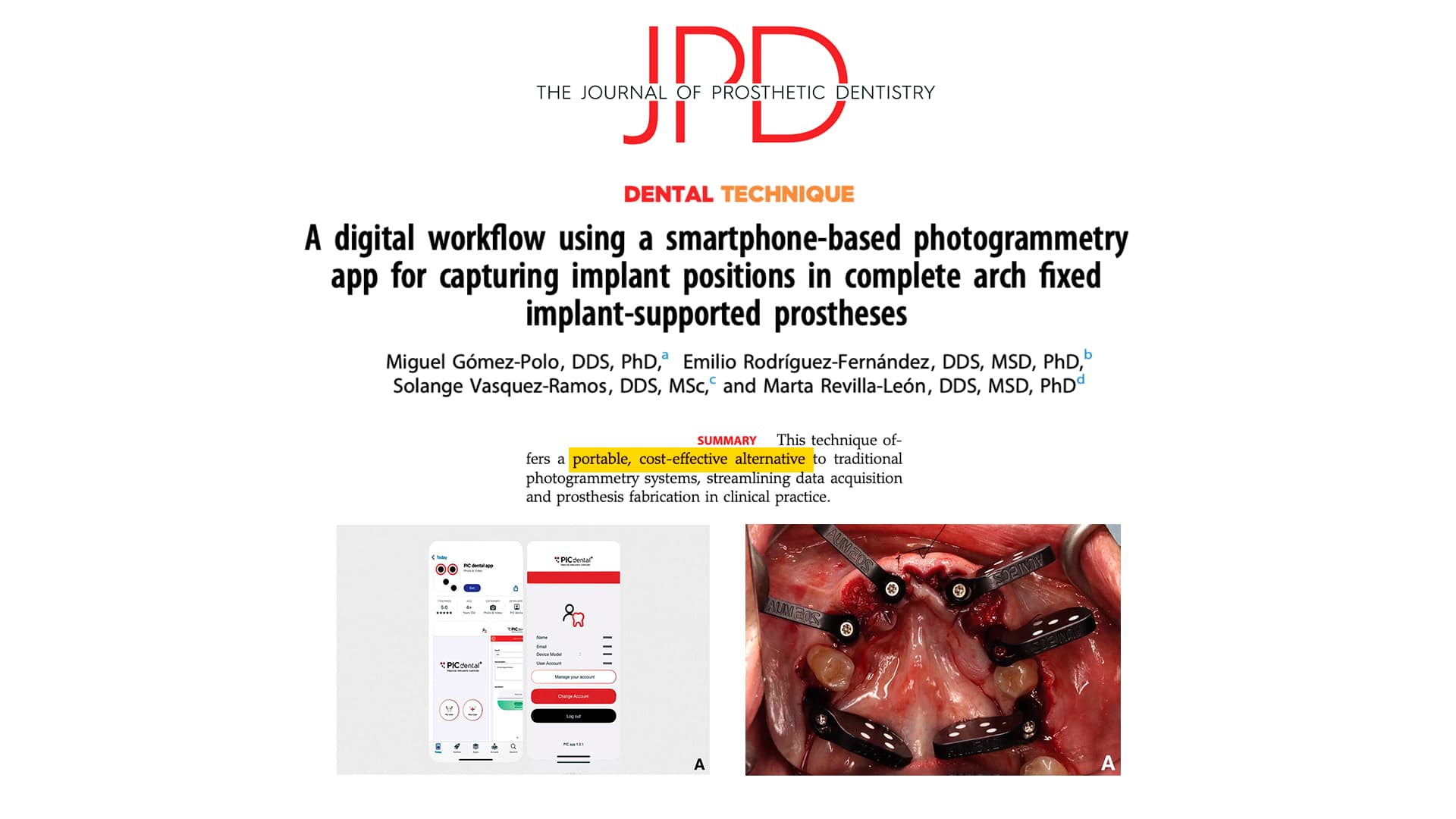A new in vivo study conducted by Dr. Alessandro Pozzi and his collaborators has been recently published in the Clinical Oral Implants Research journal, the most cited journal in implant dentistry. This clinical trial explores the accuracy of intraoral optical scanning devices and the stereo-photogrammetry-based Legacy PIC system for full arch digital implant impressions.

This marks the 20th scientific publication proving the capabilities of the PIC system. In vivo research holds immense value, validating the performance of our solutions. It accounts for real-life clinical variables that can impact the accuracy of prosthesis fit when working with actual patients.
The PIC system has provided a significantly higher linear and angular accuracy in this study, and it continues to be proven as a reliable, evidence-supported choice for dental professionals who expect predictable results in their full arch implant treatments. The findings of this paper are consistent with previous in vitro and in vivo research, such as a 2022 in vivo clinical study where the PIC system also delivered the smallest mean error and deviation for both distances and angulations in an 8-implant maxillary and mandibular arches. (Orejas-Perez et al., 2022)
%20-%20Agosto/2023-08%20Pozzi%20et%20al%20scientific%20article/2023-08%20-%20Pozzi%20et%20al%20scientific%20article%203.png) Pozzi’s study included 11 edentulous patients in need of implant-supported screw-retained zirconia full arch fixed-dental prostheses. For each patient, three types of impressions were taken: intraoral scanner (IOS), stereophotogrammetry (SPG) using the Legacy PIC system, and open-tray plaster as the reference. Linear, three-dimensional, and angular deviations were assessed for each implant, and the results were categorized based on the technology used.
Pozzi’s study included 11 edentulous patients in need of implant-supported screw-retained zirconia full arch fixed-dental prostheses. For each patient, three types of impressions were taken: intraoral scanner (IOS), stereophotogrammetry (SPG) using the Legacy PIC system, and open-tray plaster as the reference. Linear, three-dimensional, and angular deviations were assessed for each implant, and the results were categorized based on the technology used.
Results
The Legacy PIC system (SPG) outperformed intraoral scanning, exhibiting lower 3D and angular deviations and consistent performance, making it a feasible option for full arch digital impressions. The type of arch (maxilla vs. mandible) and the number of implants) did not have an effect on PIC system’s accuracy.
Limitations of intraoral scanners
Intraoral scanners and the PIC system have distinct purposes. While intraoral scanners scan the surface of mouth tissues to produce a 3D mesh, the PIC system measures distances and angulations between implants using photogrammetry, without scanning geometry.
This study cites previous publications related to intraoral scanning (Kihara et al., 2019; Pozzi et al., 2022) which have identified the need for continuous reference points to speed up the stitching process and enhance the matching accuracy of consecutive 3D images. This requirement arises due to a basic limitation of the current IOS solutions, which relies on a best-fit algorithm image stitching process to produce the three-dimensional (3D) image reconstruction.
Legacy PIC system
%20-%20Agosto/2023-08%20Pozzi%20et%20al%20scientific%20article/2023-08%20-%20Pozzi%20et%20al%20scientific%20article%201.png)
The study was conducted using the original Legacy generation of the Legacy PIC system, which has been instrumental since its initial release in 2009. A newer generation of the PIC system launched in 2022, with updated form factors and a new PIC camera with Micron Vision camera modules that provides a 30% increase in precision compared to its Legacy predecessor.
The potential of the latest PIC system holds promise for even better results, and we are highly anticipating the scientific community’s work in future validation studies to corroborate its performance.
SOURCES
-
Kihara, H., Hatakeyama, W., Komine, F., Takafuji, K., Takahashi, T., Yokota, J., Oriso, K., & Kondo, H. (2019). Accuracy and practicality of intraoral scanner in dentistry: A literature review. Journal of Prosthodontic Research, 64(2), 109–113. https://doi.org/10.1016/j. jpor.2019.07.010
-
Orejas-Perez, J.; Gimenez- Gonzalez, B.; Ortiz-Collado, I.; Thuissard, I.J.; Santamaria-Laorden, A. (2022). In Vivo Complete-Arch Implant Digital Impressions: Comparison of the Precision of Three Optical Impression Systems. Int. J. Environ. Res. Public Health 2022, 19, 4300. https://doi.org/10.3390/ijerph19074300
-
Pozzi, A., Carosi, P., Gallucci, G. O., Nagy, K., Nardi, A., & Arcuri, L. (2023). Accuracy of complete- arch digital implant impression with intraoral optical scanning and stereophotogrammetry: An in vivo prospective comparative study. Clinical Oral Implants Research, 00, 1–12. https://doi.org/10.1111/clr.14141



